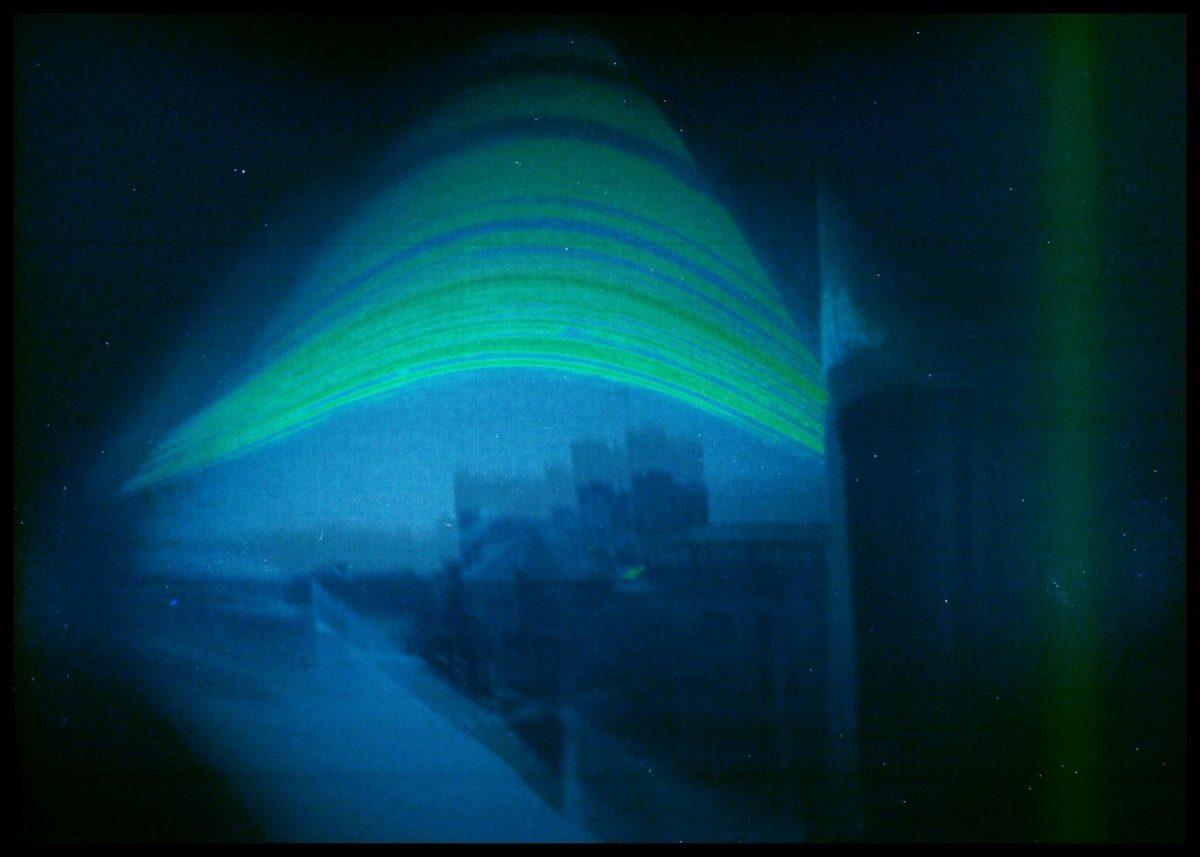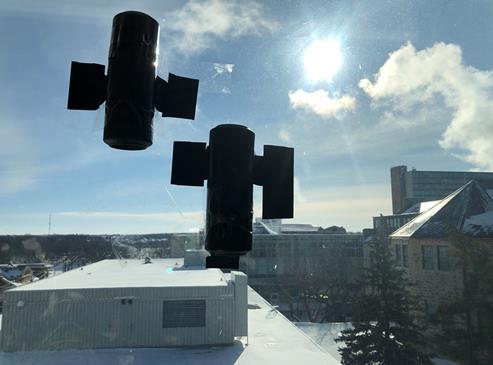
Solargraphic image taken from the sixth floor of the Fletcher Argue building showing a semester's worth of the sun's movement across the sky. Credit: V. Warne
A camera in a can? Pop-up exhibition features student solargraphs
Nineteenth-century photographic process adds to students’ learning
On April 5, 2024, from 9:00 a.m. to 4:00 p.m., students from ENGL 2140: Literature of the Victorian Period invite the UM community to a one-day pop-up exhibition Long Exposure: A Pinhole Photography Exhibition featuring images and written reflections on their experience using pinhole cameras to create solargraph images.
In fall 2023, with the support of the Faculty of Arts’ Teaching and Learning Enhancement Fund, students enrolled in the class used recycled beverage cans and electrical tape to create forty-six pinhole cameras. These cameras, distributed across the UM campus, and around the city and province, created a series of long-exposure solargraphs.
Solargraphs, which date back as early as the tenth century but gained wider popularity in the nineteenth century, document not only landscapes and architectural features but also trace the intricate patterns of the sun’s journey across the sky over an extended period of time.

Pinhole cameras. Credit: V. Warne
Generating solargraphic images is a time-consuming process. In October 2023, Professor Vanessa Warne, Department of English, Theatre, Film & Media and the students collected beverage cans, washed them, cut the tops off, and spray-painted them black – inside and out. They then paired a short can with a tall can and pierced the side of each tall can with a sewing pin. Using a red light, they placed a sheet of black and white photography paper in the tall can and then used a short can as a lid to seal the camera. The pinhole and the join between the tall and short cans were covered with electric tape to keep light out. The cameras were then installed inside or outside, on campus or beyond. Once the cameras were secured in place, the tape covering the pinhole was removed. Then they waited – for four months! Over reading week, students harvested their cameras and then made digital scans of the images captured by the cans. Some cans did not yield images; many cans did. Dr. Warne shares that the final results are, “intriguing and even haunting.”
“A way to map the passing of days, these rudimentary cameras are prompting members of the class to think differently about the duration of a day, a season, and an academic year,” said Dr. Warne. “By trying their hands at a nineteenth-century photographic process, the students are deepening their knowledge not only of the history of photography but also of the enmeshment, in both our era and in the Victorian era, of image making, storytelling, and timekeeping.”
What did the pinhole cameras capture in the four months of their installation? Visit the pop-up exhibition in room 627 Fletcher Argue Building (Haney Reading Room) on April 5th to find out!






